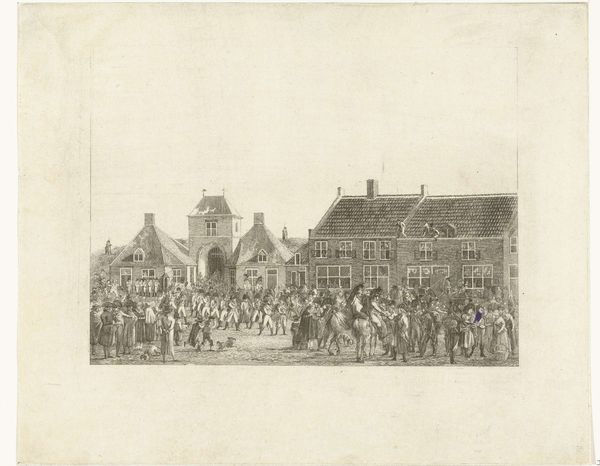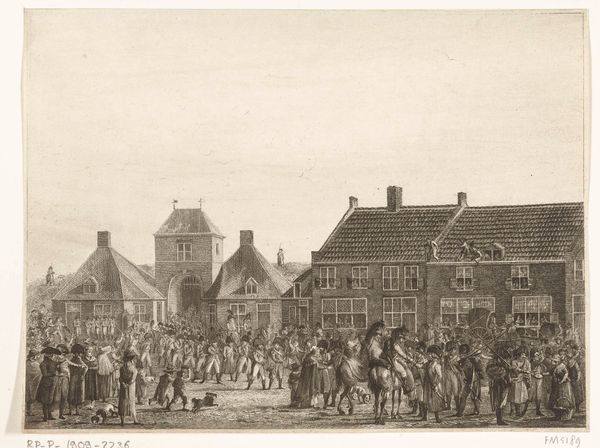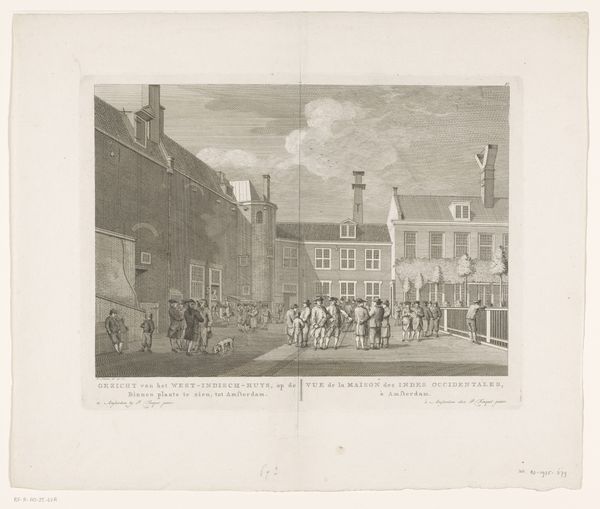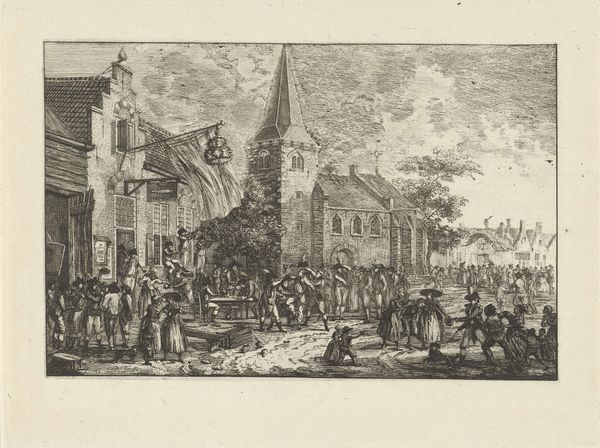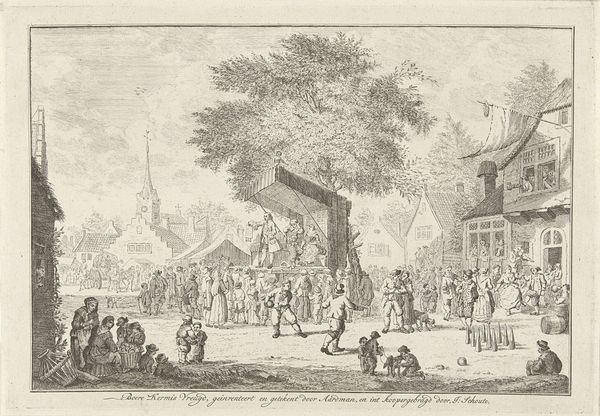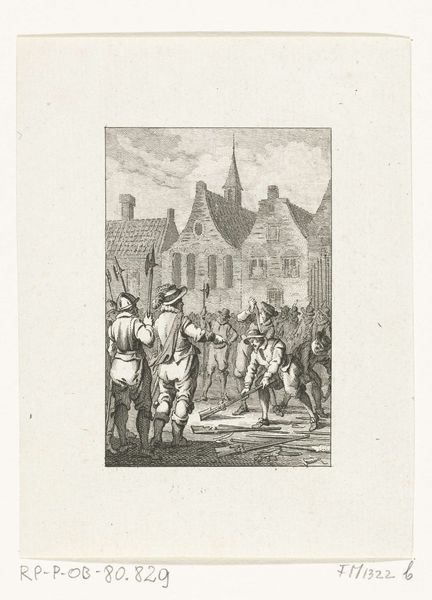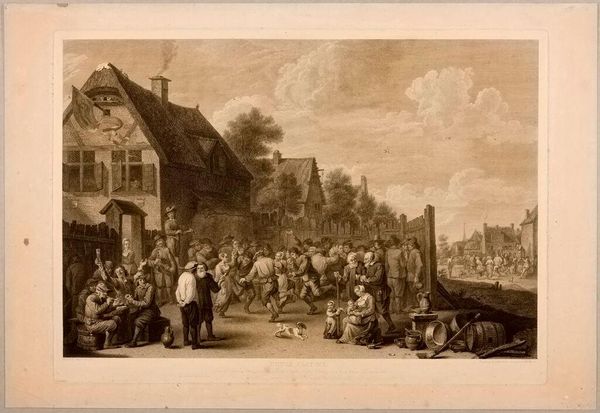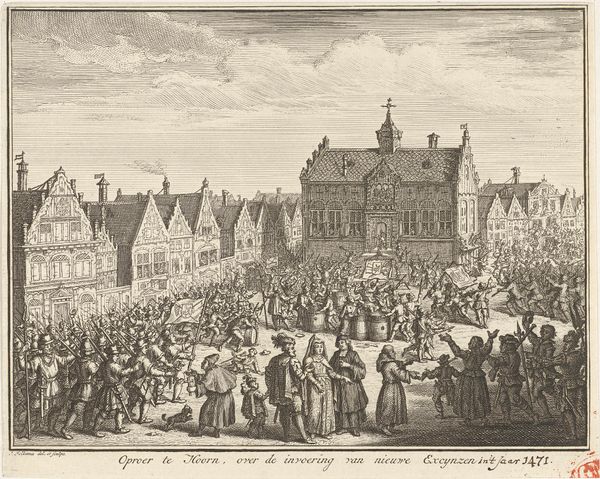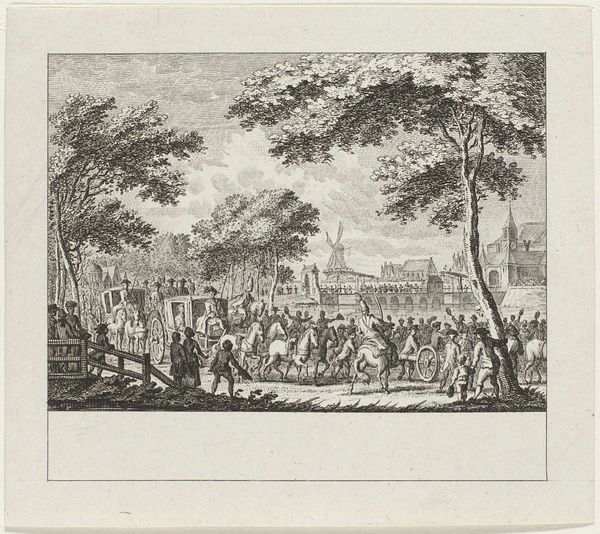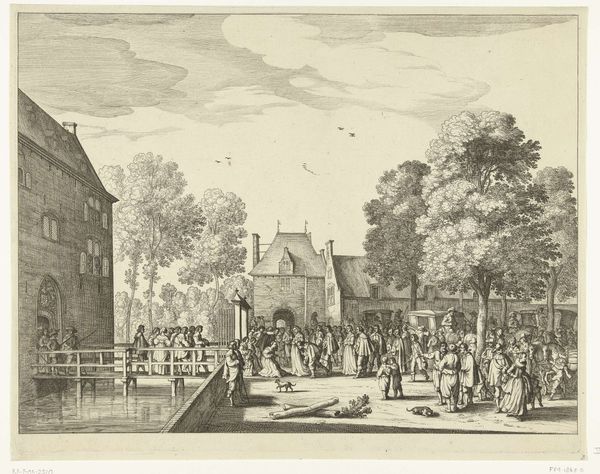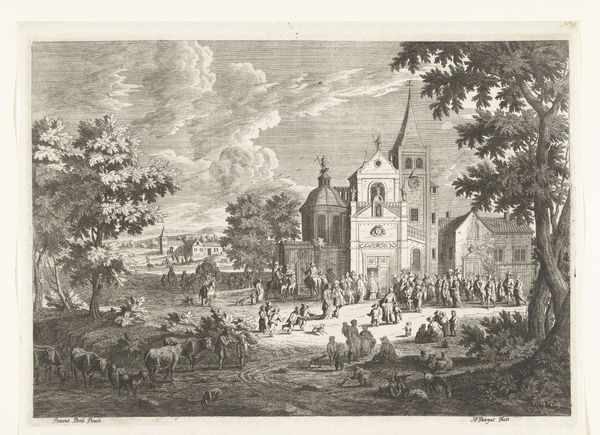
print, engraving
#
neoclacissism
#
narrative-art
# print
#
figuration
#
line
#
cityscape
#
history-painting
#
engraving
#
realism
Dimensions: height 224 mm, width 273 mm
Copyright: Rijks Museum: Open Domain
Curator: This print, created sometime between 1800 and 1841 by Joannes Bemme, depicts "Franse troepen trekken Breda binnen, 1793" which translates to "French troops entering Breda, 1793." The Rijksmuseum is fortunate to have this example of Neoclassical printmaking in its collection. Editor: There's a palpable sense of… ambivalence, maybe? Look at the composition – the neat rows of soldiers, yet a strangely subdued reception from the townsfolk. I am thinking about the gaze of the figures present and what it might mean within the context of conflict and national identity. Curator: Indeed, it's a carefully constructed image. Note the architecture – stoic, ordered – echoing the ideals of Neoclassicism, mirroring the purported rationality of the Revolution that drove these troops. The engraving, as a medium, lends itself well to this crisp, clear depiction. The lines carry cultural associations with precision and order, even when representing political tumult. Editor: I wonder, though, how accurate a depiction this really is. Think about the power dynamics. An occupying force rarely receives universal acclaim. This image feels…sanitized. Where’s the resistance? Where's the complex reality of the French Revolution in occupied territories? I am intrigued by what is purposely omitted to suit certain propagandist views, especially since this piece was created years after the depicted event. Curator: The act of depicting this scene years later does color the piece through memory and historical positioning, perhaps serving as an allegorical painting in line with the art movement during that time, where precision and heroism often blend. Even the light seems intentionally placed, almost ethereal. What underlying sentiment does that imbue this political moment with? Editor: Exactly, this almost propagandistic, polished narrative smooths out all the uncomfortable edges of invasion and domination. There must have been stories untold behind that performative display of 'liberation'. To me, the most intriguing thing is how artists shape our memory through constructed historical representations, particularly around warfare, conquest and occupation. Curator: A compelling thought – how artists manipulate perceptions of past events through symbolism and technique, solidifying historical views. Looking at Bemme's print in this way provides insight into the creation and reception of such narratives, opening paths to reassessing the complexity of French expansion. Editor: Yes, it’s through such critical examinations that we reclaim a more complete, even if inevitably fractured, understanding of history and question visual media and rhetoric.
Comments
No comments
Be the first to comment and join the conversation on the ultimate creative platform.
